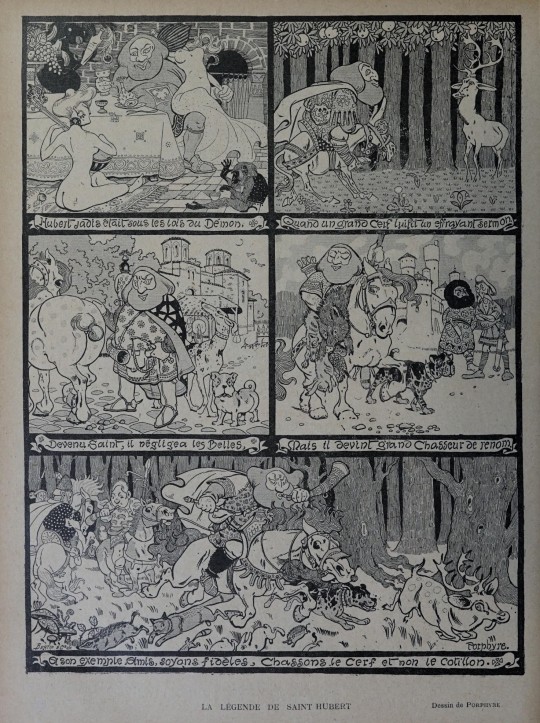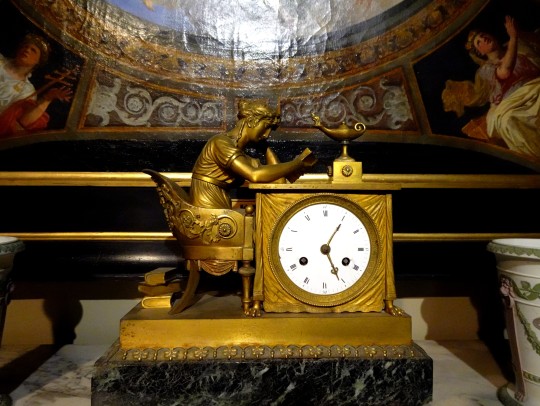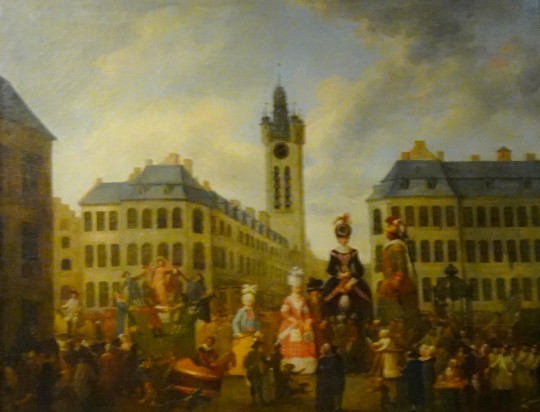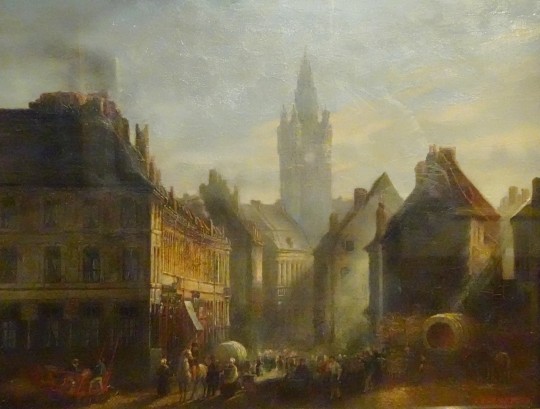#porphyr-
Text
day 4 of campfire fest!! had an hour before the day ended by the time i finished this... shaknsbsjsbsn
(( @outerwilds-events ))
i got a fic idea literally yesterday so i'll just write it later if i decide i want to actually do it, but i didn't have time to before today ended so i just decided to do art based on this idea anyways.

very early game spoiler under cut
time loop hardly counts as spoilers but it's important to me that people don't get that spoiler
don't ask how hatchling would be able to make sap wine in the time loop, my explanation is that uhmm actually the loop will be a full day and uhh they didn't make it properly to save time. yeah, yeah that... makes sense. idk i just need porphy to have that extraterrestrial sapwine. i'll bend the rules to give them that
#outer wilds#outer wilds fanart#outer wilds spoilers#porphy#porphyr#outer wilds hatchling#outer wilds porphy#outer wilds protagonist#outer wilds events#campfire fest 2024#campfire fest#sawyer arts
71 notes
·
View notes
Text






Louvre-Lens : il y a une expo : “Mondes souterrains : 20.000 Lieux sous la terre”. la suite et fin.
pendentif, Saint Janvier bénissant et tenant des burettes - Naples, XVIIIe s.
Fac-simile (bon, on s'y attendait) du ''Régent'', diamant de la Couronne
Johann Daniel Mayer - coupe en argent, jaspe, rubis, or… - 1660
Philippe Caffieri - coupe en porphyre - 1750
les 2 derniers : bustes d'empereurs romains (dont la tête est en jaspe, calcédoine, agate, cornaline, cristal de roche,...) - Rome, 1750
#louvre-lens#expo#mondes souterrains#20.000 lieux sous la terre#gemme#bijou#cristal#pierre précieuse#le régent#diamant#saint janvier#johann daniel mayer#jaspe#rubis#philippe caffieri#porphyre#roche#empereur romain#rome antique
32 notes
·
View notes
Text

Charles Desains (French, 1789-1862)
Femme asphyxiée, 1822
Oil on canvas
105 notes
·
View notes
Note
What’s the significance of each color in Ancient Greece? So green is the only neutral color and it represents mostly natural and earthy things, thank you for telling me that part !! Anyway, as for my Hyacinthus design’s hair being brown, it’s due to the combination of it being a fairly common interpretation of his appearance and also because I find I like how it looks with his skin tone and the purple of his eyes.
Okay, firstly; thank you so much for answering my question too!
Admittedly you can't beat out good, old fashioned colour theory so that's completely fair haha! I still think it's very interesting that brown became the common interpretation of his features so I'm always glad to hear other people's view on it <3
With respect to what colours meant or symbolised in Ancient Greece, it's a super fascinating topic because the Ancient Greeks had a very different perception of colour than how a lot of people - and in this case I'll generalise and say english-speaking people - perceive colour. In a lot of languages, especially older ones, colour wasn't just a way to describe the physical perceptional reality of an observable object (that is, the light reflecting off the object that gives it its perceived hue - the way we perceive colour now) but colour was also used to describe the way in which the people experienced the world. A really good way to think about it is now, if you wanted to distinguish between two types of blue, you would instinctively make a distinction between their shades ("This blue is darker/lighter!") whereas these older people would distinguish based on things in their present, shared world that best matched what they were being asked to describe ("This blue is like the sky/the sea!")
That's an important concept to keep in mind because ancient greek was very unique in that, in addition to this concept of colour being completely intertwined with physical objects (and therefore also acquiring the properties of these objects in the minds of the people), the ancient greeks also did not particularly care about distinguishing between different colour hues (that is, differences in specific individual colour) but rather they were entirely focused on a colour's value - that is, whether it was considered light or dark.
Taking all of this into consideration, the question 'what is the significance of the different colours in Ancient Greece' is a bit of a tricky one to answer because unlike say, Ancient Egyptian which has very clear colours (red, white, green), very clear physical objects that give those colours their property (the desert sand, the sun, people's skin) and very clear symbolic meanings that arose from the natures ascribed to those physical objects due to their influence on the people's lives (hostility, power, new life), Ancient Greece's colours and the perception of those colours was much more abstract and poetic, contingent on their understandings and perceptions of things like light and dark, the sense of touch or taste (sweet and bitter/wet and dry) and what quality was ascribed to the object whose colour is being perceived. Colour was a matter of cosmology, of philosophy and there were many different schools of thought on it from Empedocles' physicalist theories to Anaxagoras' realist theories.
All of this is to say, take the meanings I outlined in this handy-dandy table with a tablespoon of salt! These are based on my understanding of the language used to describe things in classical writings that have survived and my own bias towards Empedocles' physicalist theory of colour and the nature of colour which I also think is very useful for people into greek mythology as a whole due to it making clear links between various gods creating things from mixtures of the four basic elements of nature and the colours that are the result of these mixtures.
I hope this helps even a little and I very much encourage you to do some research into different Greek schools of thought when it comes to colour and the perception of colour as well as how colour affects/reflects the innate nature of all things!
(Also, slight extra note, I left out Kokkinos (scarlet/blood-red) from the table because I didn't really think it was relevant for this outline despite it definitely being an ancient colour. It's a bit difficult to find examples of it with the kind of descriptors Empedocles outlines and I don't want to make assumptions based on third hand knowledge on the greek concept of the nature of things. I'd like to believe it was addressed in more detail in Empedocles' original document - only a fragment of the original some two thousand lines have survived after all - it is confirmed that Empedocles spoke on the recipe for blood and flesh, an equal mixture of all four elements as opposed to bones' four parts fire, two parts earth and two parts water (which is why bones shine white, there's more fire than earth or water) - and I don't want to conject or make assumptions.
I also left out Erythros or basic/primary red according to Plato's list of basic colours because that seemed to have specifically been preferred by Egyptian Greeks according to linguistic data. If I opened up that can of worms with respect to the shared Egyptian-Greek colour language including the way the Greeks like many early peoples did not culturally perceive blue until the invention of Egypt's blue dyes then I would be writing forever and you would never get an actual clear answer about Greek colour symbolism separate and apart from Egyptian cultural influence lmfao. )
A few of the documents that helped me consolidate this information include Sassi's 2022 Philosophical Theories of Colour in Ancient Greek Thought and Ierodiakonou's Empedocles on Colour and Colour Vision. There are also a fair few translations and discussions of the fragments of Empedocles' On Nature still floating about - my copy is a somewhat archaic volume of Leonard's 1908 translation but I never went out searching for updated interpretations and translations of the text since its constantly referenced in perceptional philosophy papers LOL
Anyway, yeah, hope this helps! :D
#ginger rambles#ginger answers asks#I don't know if this is what you wanted but I really really hope it helps!!#I wish I was able to find a way to actually have the table in this response but I'm just not good with stuff like that so I just decided#to link it instead; hopefully that's not too troublesome#There's a LOT to talk about when it comes to the greeks and their perception of colour#The discussion of colour and how languages evolved to accommodate them is also a very fascinating thing#Yes I am a historical linguist how did you know#Both kyanos and porphyrous are really fun because you can tell they were adopted later#because they come from the names for gemstones that were already in circulation and trading as opposed to words unattached to an observable#tangible feature in the world#Like pyrros is named after fire vs kokkinos which is named after the holly seeds#that were grinded up to make red dye that they used for their clothing#which is another reason I chose to use pyrros over kokkinos on the table#Seriously though#This stuff is mad interesting I highly suggest you take a day and just go down the rabbit hole a bit#Even small things like this can help massive recontextualise the often distant and detached way modern audiences are prone#to treating mythologies from the cultures that they were deeply ingrained in#greek mythology#linguistics#I guess LMFAO#Cosmology#Extra secret fun fact#My Hyacinthus is a realist aka he doesn't believe in all this four elements stuff#He quicker subscribes to the realist school of thought made apparent by sticks in the mud like Anaxagoras and Parmenides#ginger chats about greek myths
7 notes
·
View notes
Text

13 notes
·
View notes
Text
40 notes
·
View notes
Text

“Aiguière” de Zegher van Steynemolen Flandres en porphyre vert et montures en vermeil (1468-1491) présentée à l'exposition "Trésors Médiévaux du V&A : Quand les Anglais Parlaient Français" à l'Hôtel de la Marine, Place de la Concorde, Paris, décembre 2023.
4 notes
·
View notes
Photo

La légende de Saint Hubert
Hubert jadis etait sous les lois au démeon,
quand un grand cerf luifit un effrayant sermon.
Devenu saint, il negligea les belles.
mais il devint grand chasseur de renom.
Ason exemple, aimis, soyons fideles, chassons le cerf et non le cotillon.
The legend of Saint Hubert
St. Hubert was once under the laws of Demeon,
when a great stag gave him a frightening sermon.
He became a saint and neglected the beautiful ones.
but he became a great hunter of renown.
As his example, let's be faithful, let's hunt the stag and not the petticoat.
-- Joseph Porphyre, Le Rire (The Laugh; French comic)
#Joseph Porphyre#Porphyre#le rire#French cartoonist#comic#vintage comic#illustration#vintage illustration#Saint Hubert#St Hubert#hunting
12 notes
·
View notes
Text
THEY'RE LITERALLY CALLING IT VAMPIRITIS??? WHAT THE FUCK
#THATS THE MEME NAME YOU GIVE TO PORPHYRIC HEMOPHILIA IN OBLIVION NOT ASOMETHING YOU CALL UR SICKNESS FOR REAL IN GAME#FKGHUDSFKDHFD
3 notes
·
View notes
Text
Gaza est aussi le lieu d'un génocide culturel
Un génocide, comme celui qui est en cours à Gaza, a plusieurs facettes dont la principale est évidemment l’élimination physique d’un peuple, soit en donnant la mort, soit en forçant à la dispersion. Parce qu’un peuple peut être aussi anéanti par la dispersion et l’élimination de tout ce qui fait ses racines: édifices à caractère patrimonial, de nature cultuelle ou non, institutions de formation…

View On WordPress
#Afrique du Sud#Église Saint-Porphyre#Cour Internationale de Justice#Gaza#génocide#Grande Mosquée Omari#Palestine#Qasr el-Basha#Raphael Lemkin#sionisme
0 notes
Text
Technische Gesteinskunde und Geologie in Südtirol
Gestein ist ein natürlich vorkommendes, mehr oder weniger festes, mikroskopisch heterogenes Gemisch aus Mineralkörnern, organischen und anorganischen Bestandteilen und Gesteinsbruchstücken. Aufgrund sehr unterschiedlicher geologischer Entstehungsgeschichten und Mechanismen sind die Eigenschaften lokal naturgemäß sehr unterschiedlich. Grundsätzlich ist von magmatischen Gesteinen, von metamorphen…

View On WordPress
#Bauen#Bauingenieur#Bauingenieur Südtirol#Dolomiten#Engineering#Etschtaler Vulkanitgruppe#Geologie der Alpen#Geologie der Dolomiten#Geologie in Südtirol#Geologie Südtirols#Gesteinskunde#Ostalpen#Porphyr#Quarzporphyr#Südalpen#Südtirol#Technische Gesteinskunde#Weiter denken
0 notes
Text

THIS IS TOO MUCH ISSUE, GEORGE
1 note
·
View note
Text








Douai (Nord), le Musée de la Chartreuse. Une visite pour la Nuit des Musées.
pendule à l'étude - 1805
Albert Bouquillon : "L'Ethiopienne"
Henry Serrur : "Mort d'un soldat grec à la prise de Tripolitza"
François-Louis Français : "Sentier dans les blés"
couperet de guillotine - Douai, 1813-1870
Jules Scalbert : "Les Trois Âges"
Louis Watteau : "La famille du Grand Gayant de Douai"
Georges Barnetche: "'Vue de Douai"
#douai#musée de la chartreuse#chartreuse#pendule#premier empire#napoléonien#albert bouquillon#bouquillon#éthiopienne#porphyre#henry serrur#tripolitza#grèce#françois-louis français#couperet#guillotine#jules scalbert#scalbert#beffroi#gayant#génats de douai#louis watteau#watteau#georges barnetche#barnetche
4 notes
·
View notes
Text
Lessines - Marche au Pays du Porphyre
Mooie wandeling in de geboortestad Lessen / Lessines van René Magritte.
Het ging vandaag opnieuw richting Wallonië, net over de taalgrens. Het stadje Lessen die blijkbaar de geboortestad is van de beroemde surrealistische schilder René Magritte. Nooit te oud om bij te leren. Zelfs in eigen land zullen weinig mensen dit zomaar los uit de pols geweten hebben. Voor mij zijn beroemdste werk is “Ceci c’est ne pas une pipe” . Ik denk velen met mij.
Midden een fietspad was…

View On WordPress
#2023#Geboortestad#Les Vaillants Acrenois#Lessen#Lessines#Lessines - Marche au Pays du Porphyre#René Magritte
0 notes
Text
Samiotisches Kaffee-Tagebuch: des Kloster Panagia Spiliani und die Höhle der Sibylle
Samiotisches Kaffee-Tagebuch: des Kloster Panagia Spiliani und die Höhle der Sibylle
Als wäre das Kloster Panagia Spiliani nicht schon besonders genug, ranken sich um diesen mystischen Ort auch zahlreiche Mythen und Legenden. Deren Ursprung liegt schon im Namen, denn Spilia bedeutet Höhle und Höhlen waren im vorantiken Griechenland schon oft Orte religiöser Kulte. So wundert es nicht, dass diese Höhle, an deren Ende eine Quelle entspringt, deren Wasser Heilkräfte zugeschrieben…

View On WordPress
#Eratosthenes#erythräische Sibylle#Grotte#Höhlenkirche#Orakel#Panagia Spiliani#Phemonoe#Phyto#Porphyr#Pythagoras#Samiotische Sybille#Samische Sybille#Sibylle#Varro von Lactantius#Zeus
0 notes
Text






“Série de Bagues” (XII-XIIIe siècles) présentées à l'exposition "Trésors Médiévaux du V&A : Quand les Anglais Parlaient Français" à l'Hôtel de la Marine, Place de la Concorde, Paris, décembre 2023.
1 note
·
View note